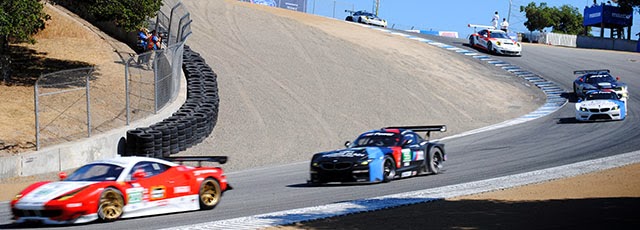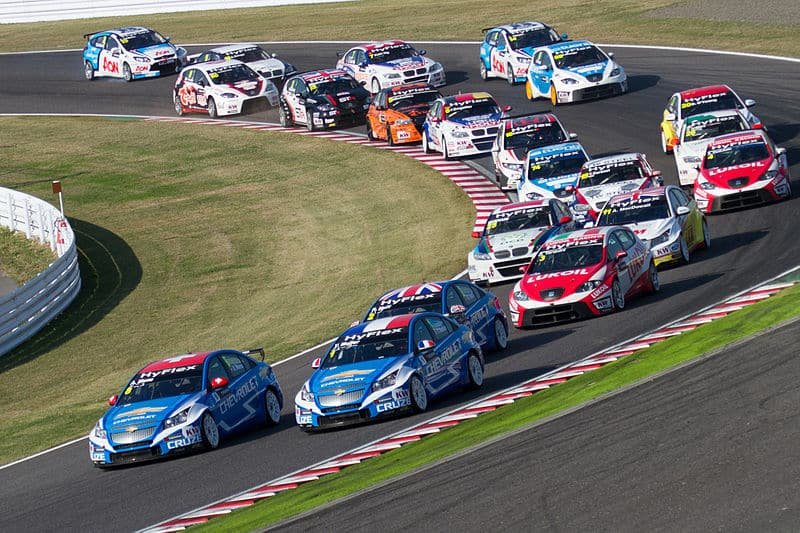Yes, racing is a sport. It involves physical skill and competition.
Racing events draw large crowds and require intense preparation. Racing has long been a popular activity. From cars to horses, people love the thrill of speed. But what makes racing a sport? It’s not just about who is fastest. It’s about the strategy, training, and dedication involved.
Athletes must hone their skills, study their opponents, and push their limits. The physical and mental demands are high. Racing also has rules and regulations, just like other sports. These ensure fair play and safety. Whether on a track or through the streets, racing challenges both body and mind. Join us as we explore why racing deserves its spot in the world of sports.
The Essence Of Racing
The thrill of racing captivates hearts around the world. It is not just about speed. It is a test of skill, strategy, and endurance. The roar of engines, the smell of burning rubber, and the adrenaline rush – these elements define the essence of racing. For many, racing is more than a sport. It is a passion that fuels their lives.
History Of Racing
Racing has ancient roots. It began with chariot races in ancient Rome. By the late 19th century, motor racing emerged. The first recorded car race took place in 1894 in France. Over the years, racing evolved. New formats and technologies were introduced. Today, racing spans across various disciplines and continents.
Types Of Racing
Racing comes in many forms. Each offers unique challenges and thrills. Car racing is the most popular. It includes Formula 1, NASCAR, and rally racing. Motorbike racing is another favorite. MotoGP and Superbike races attract millions of fans. There is also bicycle racing. It includes events like the Tour de France. Boat racing, horse racing, and even drone racing add to the variety. Each type has its own rules, vehicles, and fan base.
Physical Demands
Many people question if racing is a sport. They often overlook the intense physical demands racers face. Racing is not just about driving. It requires a high level of fitness. Let’s dive into the physical demands of racing.
Endurance And Stamina
Racers need exceptional endurance and stamina. Races can last for hours. Drivers must stay focused and alert. The heart rate of a racer often remains high throughout the race. This is due to the mental and physical stress. It’s similar to running a marathon.
Here is a simple comparison:
| Activity | Average Heart Rate |
|---|---|
| Running a Marathon | 140-160 bpm |
| Racing | 120-150 bpm |
Strength And Conditioning
Strength and conditioning are crucial for racers. The forces experienced in a car are immense. Drivers face strong G-forces during turns and accelerations. This requires a strong core and neck muscles. Racers often train like athletes.
- Core exercises
- Neck strengthening routines
- Cardio workouts
These exercises help them handle the physical strain of racing. Strong arms and legs are also important. They help in controlling the car and making quick adjustments.
Mental Toughness
Racing is not just about physical strength and speed. It demands immense mental toughness. Racers must stay calm under pressure, make quick decisions, and maintain focus. Here’s a closer look at the mental skills required in racing.
Focus And Concentration
Racers need to maintain high levels of focus and concentration throughout the race. Distractions can be costly. A split-second lapse in attention can lead to mistakes. Racers must:
- Keep their eyes on the track
- Monitor other racers
- Maintain awareness of their vehicle’s performance
Staying focused helps in anticipating the moves of competitors. It also aids in managing the vehicle’s speed and direction effectively.
Decision-making Skills
Quick and accurate decision-making is crucial in racing. Every second counts. Racers need to decide:
- When to overtake
- How to handle sharp turns
- When to speed up or slow down
The ability to make the right decisions under pressure can mean the difference between winning and losing. Good decision-making skills also help in avoiding accidents and maintaining safety.
| Skills | Importance |
|---|---|
| Focus and Concentration | Prevents mistakes and maintains performance |
| Decision-Making | Critical for strategy and safety |
In racing, mental toughness is as important as physical ability. Developing strong focus and decision-making skills can greatly enhance a racer’s performance.
Technical Expertise
Racing is often debated as a sport. It demands physical skill and mental sharpness. However, technical expertise is what sets racers apart. Understanding vehicles inside and out is crucial. So is the ability to fix and tweak them. Let’s delve into the technical aspects that make racing a true sport.
Vehicle Knowledge
Racers must know their vehicles well. They need to understand the engine, brakes, and tires. This helps them get the best performance. They should know how different parts affect speed and handling. This knowledge allows them to make quick decisions during a race.
Mechanical Skills
Mechanical skills are vital in racing. Drivers often face technical issues. They need the ability to fix these problems quickly. This can mean the difference between winning and losing. Knowing how to tweak the engine or adjust the suspension is key. These skills keep the vehicle in top shape. This ensures it performs well throughout the race.
Team Dynamics
Racing is not just about the driver. Team dynamics play a huge role in the success of any racing team. Every member has a specific task. Each task is crucial for the team’s performance. Let’s explore the key roles and strategies involved.
Role Of The Pit Crew
The pit crew is essential in racing. They handle tire changes, refueling, and repairs. Speed and precision are vital. A mistake can cost valuable seconds. The pit crew’s efficiency can determine the race outcome.
Communication And Strategy
Effective communication is key in racing. Drivers rely on clear instructions. They need updates on track conditions and competitor positions. The team must have a solid strategy. This includes race pace, pit stops, and fuel management. Good strategy and communication can lead to victory.

Credit: www.motorethos.com
Comparing To Traditional Sports
Racing often sparks debates about its status as a sport. Traditional sports like football and basketball have clear physical demands. But racing, too, has its unique set of challenges. Let’s compare racing to traditional sports under these subheadings: Similarities and Differences.
Similarities
Both racing and traditional sports require athletic ability. Drivers need quick reflexes and strong muscles. They also need high levels of concentration and endurance.
Training is a must for both. Athletes and racers spend hours preparing. They work on their skills and their fitness. They aim for peak performance.
Teams are important in both areas. In racing, you have engineers and pit crews. In football, you have coaches and support staff. Both teams work together for success.
| Aspect | Racing | Traditional Sports |
|---|---|---|
| Physical Demand | High reflexes, strong muscles | Strength, speed, agility |
| Training | Focus on skills and fitness | Focus on skills and fitness |
| Teamwork | Engineers, pit crews | Coaches, support staff |
Differences
Racing has unique challenges. Drivers face extreme speeds. They navigate complex tracks. The physical toll is different but real.
Traditional sports often involve direct competition. Racing is more about time and precision. Players in sports compete head-to-head. Racers compete against the clock and each other.
The gear is also different. Traditional sports need specific equipment, like balls or bats. Racing requires vehicles, safety gear, and high-tech systems.
In summary, both racing and traditional sports have their own demands. They share similarities in training, teamwork, and physical abilities. Their unique differences make each one special.
Public Perception
Is racing a sport? Public perception varies on this topic. Some people see it as a thrilling competition. Others think it is just about driving fast. The debate continues as racing grows in popularity.
Media Representation
Media plays a big role in shaping opinions. TV shows and movies often glamorize racing. They highlight the speed and danger. This makes racing look exciting and intense. News coverage also affects how people view racing. Stories about famous drivers or big races grab attention. They bring racing into the public eye. This exposure helps build its reputation as a sport.
Fan Engagement
Fans are passionate about racing. They follow their favorite drivers and teams closely. Many attend races or watch them on TV. They discuss races online and share their views. This community of fans strengthens racing’s status as a sport. Their enthusiasm is hard to ignore. It shows that racing has a dedicated following. This fan engagement highlights its importance and legitimacy.
The Future Of Racing
The world of racing is evolving. The future holds exciting changes. New technologies and a focus on sustainability are shaping the sport. These changes aim to improve the experience for everyone. Let’s explore what lies ahead in the world of racing.
Technological Advances
Technology is transforming racing. Electric cars are becoming more popular. They are fast and eco-friendly. They also provide a different driving experience. Autonomous cars are also making an impact. These cars can drive themselves. They use sensors and AI to navigate tracks. This could change how races are conducted. Fans will see new types of competitions.
Virtual reality (VR) is another key technology. VR allows fans to experience races from different angles. It makes them feel like they are on the track. This technology can attract new fans. It also enhances the experience for existing fans. Technology is driving the future of racing.
Sustainability Initiatives
Sustainability is a growing concern. Racing is adopting green practices. Electric cars produce less pollution. They help reduce the carbon footprint of the sport. Many racing organizations are embracing renewable energy. Solar and wind power are being used at events. This helps to make races more eco-friendly.
Recycling is also a focus. Teams are using materials that can be reused. This reduces waste and conserves resources. Sustainable practices are becoming the norm. They ensure that racing can continue for years to come. The sport is taking steps to protect the environment. The future of racing is green.
Frequently Asked Questions
Is Racing Considered A Sport?
Yes, racing is considered a sport. It requires physical skill, strategy, and endurance. Competitors need to train rigorously.
What Skills Are Needed For Racing?
Racing requires physical fitness, quick reflexes, and mental toughness. Drivers must have excellent hand-eye coordination and focus.
Why Do People Enjoy Racing?
People enjoy racing for the thrill and excitement. The competition, speed, and skill involved make it captivating.
Is Racing Physically Demanding?
Yes, racing is physically demanding. Drivers experience high G-forces and need strong endurance to maintain focus.
Conclusion
Racing truly is a sport. It demands skill, focus, and endurance. Drivers train hard and face many challenges. They push their limits. Fans love the excitement and speed. The competition is fierce and thrilling. So, next time you watch a race, appreciate the athletes.
Racing is more than just fast cars. It embodies passion, strategy, and athleticism. Enjoy the ride!



